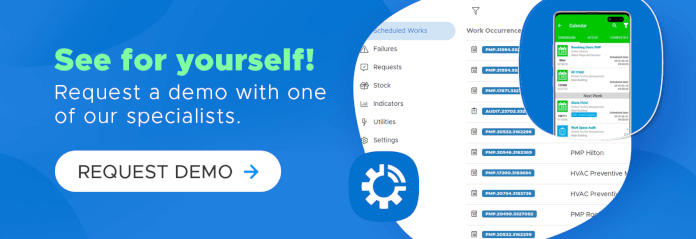If you thought prescriptive maintenance was a typo, it’s not. Understand the differences between condition monitoring, predictive maintenance, and prescriptive maintenance.
In the beginning, there was time-based maintenance. No questions asked, preventive maintenance was the best way to avoid breakdowns and preserve assets. However, it didn’t address failures at their optimal point. So, over time, maintenance naturally evolved to condition monitoring. This allowed managers to adjust their maintenance plans and fight two evils at once: failures and over-maintenance.
At first, condition monitoring revolved around frequent inspections performed by highly skilled technicians. As sensors became more prevalent and IoT developed, it quickly became machine-led. These days, it’s largely automated. If you’ve installed vibration and temperature monitors, for example, you can connect them to your maintenance platform. With improved connectivity, wireless condition monitoring can only grow.
What is Predictive Maintenance?
Once we began to apply advanced analytics to the sensor data, another type of maintenance surfaced. The byproduct of condition monitoring and data analysis is predictive maintenance (PdM). Although some people still equate it to condition monitoring, predictive maintenance takes things one step further. It extrapolates data to extract patterns, identify risks and predict when a failure is about to happen.
It may integrate with other data sets, even if they come from external sources. Some companies intersect their own data with weather data, for example. This happens in industries with external equipment, such as agriculture and oil or gas production. Their predictive maintenance algorithm will then take into consideration the tear and wear caused by adverse weather, such as strong wind and heavy rain.
The advantages are undeniable. Predictive maintenance gives maintenance managers greater insights and understanding of asset performance. Unfortunately, it still comes with high investments in condition monitoring techniques and data specialists. Therefore, even as it is becoming more common, it’s mostly applied to critical assets. It plays a leading role in Industry 4.0.
What is Prescriptive Maintenance or RxM?
So, what is prescriptive maintenance (also known as RxM)? Some might describe it as “predictive maintenance with AI” but that doesn’t quite cut it. Although maintenance software can already make smart suggestions – we have our own Infraspeak Gear™ – we can’t call those suggestions a “prescription”. Prescriptive maintenance doesn’t just predict failures. Through “what-if” scenarios, it makes recommendations to avoid or delay them.
Prescriptive maintenance requires a cognitive system that can learn, adapt and understand unpredictable information. It marries data analytics from predictive maintenance with big data, AI and machine learning. As a result, it requires an even stronger IT infrastructure. It’s worth noting that it can become even more accurate with further integrations, like quality control and engineering data.
If it sounds like the future of maintenance and facility management, it’s because it is. Except… the future is already here. Some companies, such as IBM, are already running cloud-based prescriptive maintenance programs. There are also prescriptive models for Industry 4.0’s cyber production systems. Of course, like predictive maintenance, it still requires investment and fine-tuning of deep learning algorithms.
One company that has enjoyed early success with their prescriptive maintenance program is ThyssenKrupp. Their predictive program can predict an elevator will shut down due to a door problem 5 days in advance. Based on data, their prescriptive model can provide the 4 most likely causes for the problem. Technicians can fix the issue on the first visit more than 90% of the time, which drives customer satisfaction.
Benefits of prescriptive maintenance
Prescriptive maintenance shares the same benefits as predictive maintenance. But it enhances them! Once AI has adjusted to your company, you’ll notice:
- less unplanned downtime;
- higher productivity, due to maintenance optimisation;
- more profitability, due to higher productivity;
- more virtual collaboration, since data is available remotely;
- digital prescriptive maintenance enjoys great scalability.
What are the differences between predictive and prescriptive maintenance?
Predicting vs Prescribing
As we’ve explained, predictive maintenance collects condition monitoring data. Then it detects a potential failure using advanced algorithms. Vibration analysis, for example, will detect a misalignment about 3 months before it causes a breakdown. Still, it requires managers to take action. They must analyse data, decide what to do, and create a work order.
In that case, prescriptive maintenance would automatically create a work order to correct the misalignment and send it to field technicians. It requires no intervention from managers and oversees equipment on its own. This translates into higher availability and productivity, apart from enabling remote maintenance.
Avoiding vs Delaying
Another difference is that prescriptive maintenance runs “what-if” scenarios. Predictive maintenance spots a risk that requires action and human intervention. Prescriptive maintenance can use historical data and extract patterns to provide scenarios. It might suggest “reducing the speed by 50% to double the time the asset will take to fail”, which is useful if there are no parts readily available.
It’s as if prescriptive maintenance can run a reliability plan on its own. Even in less straightforward cases, managers can choose the scenario that has less impact on their productivity or on their facilities’ safety. They can also use these algorithms to forecast costs and demands. Unsurprisingly, early adopters are taking outcome-focused approaches.
The natural evolution of maintenance
In the beginning, there was time-based preventive maintenance. Then, condition monitoring put us in sync with the equipment’s maintenance clock. Later on, we decided to analyse that data and take things a bit further with advanced analytics. We had created predictive maintenance. Now, it’s time to evolve yet again.
As machine learning and AI thrive, we’re developing increasingly accurate algorithms and models. Prescriptive maintenance considers all the available data to “prescribe” actions, improve reliability and productivity. Although still at its embryonic state, it’s the natural evolution of maintenance!


